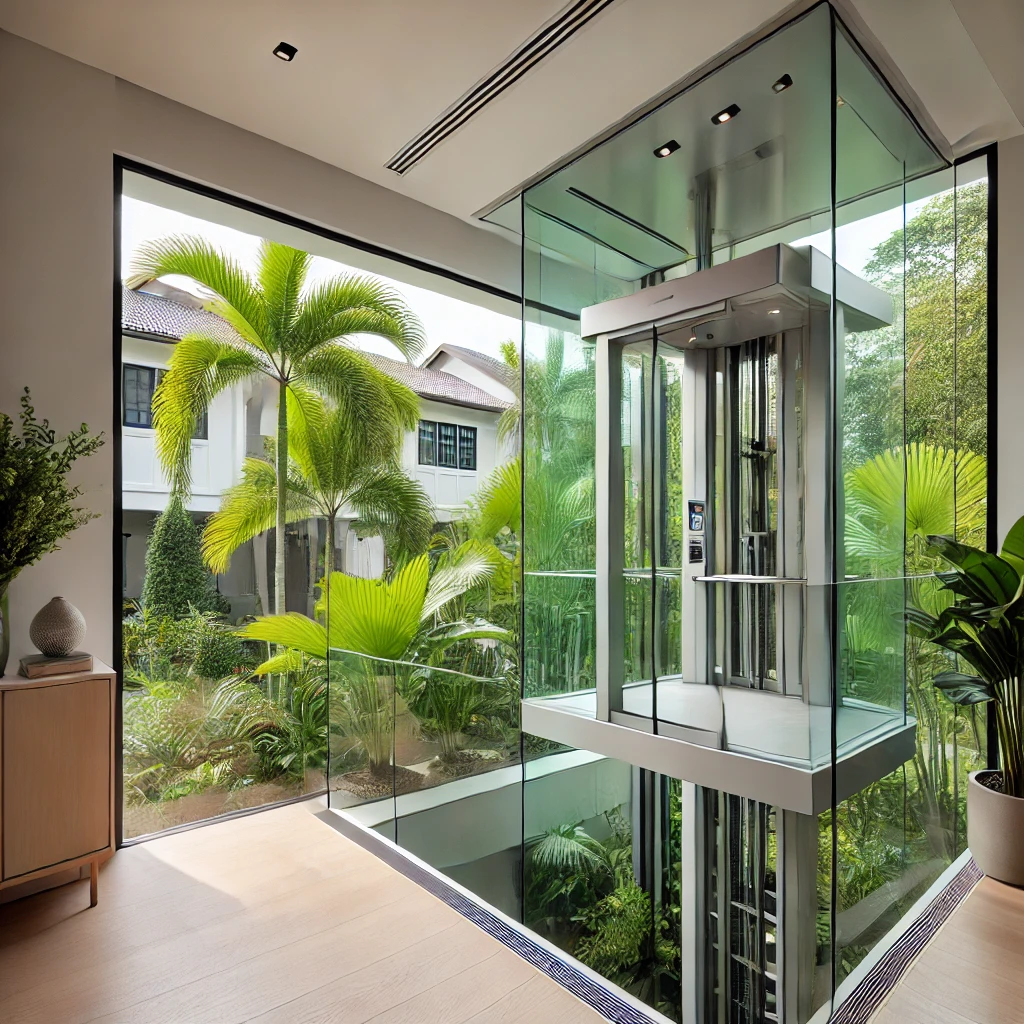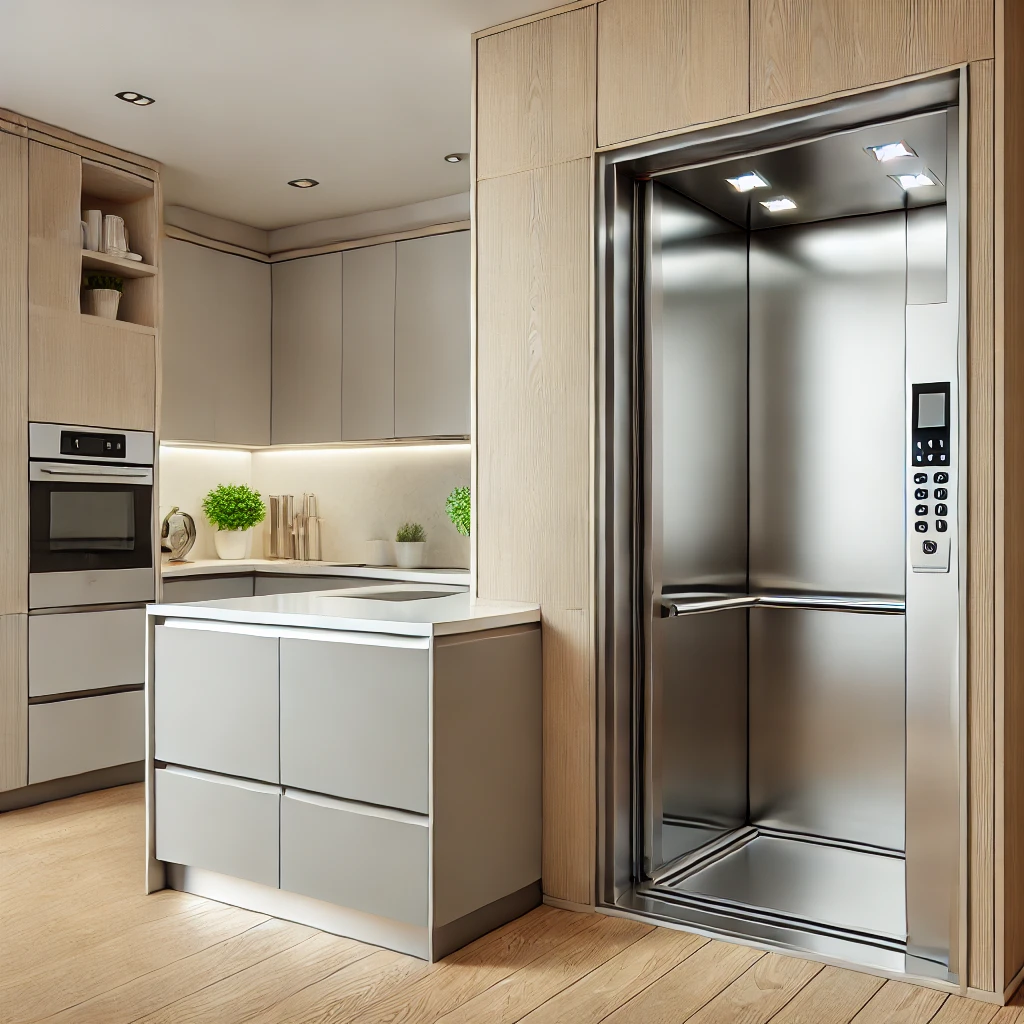Enclosed Vertical Platform Lifts: A Modern Solution for Residential Accessibility
In recent years, the demand for vertical platform lifts in residential homes has significantly increased, driven by the need for enhanced mobility and accessibility solutions, especially in situations where there are restrictions in headroom, shaft size, and pit depth. However, many owners do not wish to have the “hold to run” function that comes with platform lifts and in many instances also prefer automatic sliding doors to hinged type doors that are required under EN81-41 compliance.
The Building and Construction Authority (BCA) has recognized this trend and responded by issuing a new Code of Practice (COP) specifically for Enclosed Vertical Platform Lifts (VPLs). These lifts combine the benefits of traditional vertical platform lifts with the advanced safety features of enclosed passenger lifts, making them a perfect choice for landed houses. Most saliently, the COP allows for “press and go” functionality as well as automatic sliding doors.
Whether you are planning to improve accessibility for elderly family members, individuals with mobility challenges, or simply looking to add a convenient and stylish feature to your home, an enclosed VPL offers numerous advantages. This article explores what an enclosed VPL is, its key features, and why it might be the ideal addition to your multi-story home. By understanding the benefits and safety standards associated with these lifts, homeowners can make informed decisions to enhance both the functionality and aesthetic appeal of their residences.
What is an Enclosed Vertical Platform Lift?
An enclosed Vertical Platform Lift (VPL) is designed with a fully enclosed platform and automatic sliding doors. Unlike conventional VPLs, which require “hold to run” function under the EN81.41 standard, enclosed VPLs can be operated by “press and go” function for the convenience of users. These lifts are especially beneficial for houses with architectural constraints at the headroom, shaft, or pit and whose owners demand “press and go” functionality very much like many conventional passenger lifts. In addition, an enclosed VPL also comes with automatic sliding doors instead of the hinged type doors.
Enhanced Safety Features
The enclosed structure ensures that users are protected from the mechanical parts and movements of the lift, significantly reducing the risk of accidents. The automatic sliding doors further enhance safety by preventing unauthorized access and ensuring that the lift only operates when the doors are securely closed.
Ideal for Residential Use
These lifts are ideal for private residential use, offering a comfortable and practical solution for multi-story homes. They provide a reliable means of vertical transportation, making it easier for individuals to move between floors without the physical strain of using stairs. The spacious design accommodates wheelchairs and other mobility aids, ensuring that all users can benefit from the lift.
Customisable Design
Modern enclosed VPLs can be customized to fit seamlessly with your home’s interior design. They come in various finishes and styles, allowing homeowners to choose a lift that complements their decor. The enclosed structure and sleek automatic doors add a touch of elegance to any home, enhancing both functionality and aesthetic appeal.
Key Features and Benefits
1. Safety and Compliance
- Safety and Compliance
The new COP ensures that enclosed VPLs meet rigorous safety standards. This includes compliance with established safety regulations such as EN81-41 and SS550. Features like automatic sliding doors and emergency stop buttons prioritize user safety.
2. Enhanced Accessibility
- Enhanced Accessibility
Enclosed VPLs are specifically designed to aid individuals with mobility impairments. Whether you are using a wheelchair or have difficulty with stairs, these lifts provide easy access between floors. The spacious platform accommodates users comfortably, making daily movements within the house more manageable.
3. Aesthetic and Functional Design
- Aesthetic and Functional Design
Modern enclosed VPLs are not only functional but also aesthetically pleasing. They can be customized to blend seamlessly with your home’s interior design. The enclosed structure and sleek automatic doors add a touch of elegance while ensuring that the lift does not obstruct the overall visual appeal of your living space.
4. Convenience and Usability
- Convenience and Usability
With user-friendly controls and a smooth one-touch operation system, enclosed VPLs are designed for convenience. The automatic sliding doors and easy-to-use buttons make them accessible for everyone, including elderly family members and children.
Installation and Maintenance
1. Professional Installation
- Professional Installation
It is crucial to have your enclosed VPL installed by certified professionals to ensure it meets all safety standards. Proper installation includes assessing the space, ensuring the correct pit depth and overhead clearance, and setting up all safety features according to the COP guidelines.
2. Regular Maintenance
- Regular Maintenance
Regular maintenance is essential to keep your enclosed VPL in optimal working condition. The lift service contractor should carry out maintenance works at least once every three months or as recommended by the manufacturer. This includes checking the mechanical and electrical components, ensuring the safety systems are operational, and addressing any wear and tear.
Enclosed Vertical Platform Lifts offer a reliable and stylish solution for enhancing accessibility in landed houses. With the new BCA Code of Practice, these lifts now come with improved safety features and regulatory compliance, making them a smart choice for homeowners looking to improve mobility and convenience in their multi-story residences. Consider installing an enclosed VPL to enjoy the benefits of enhanced safety, accessibility, and aesthetic appeal in your home.


